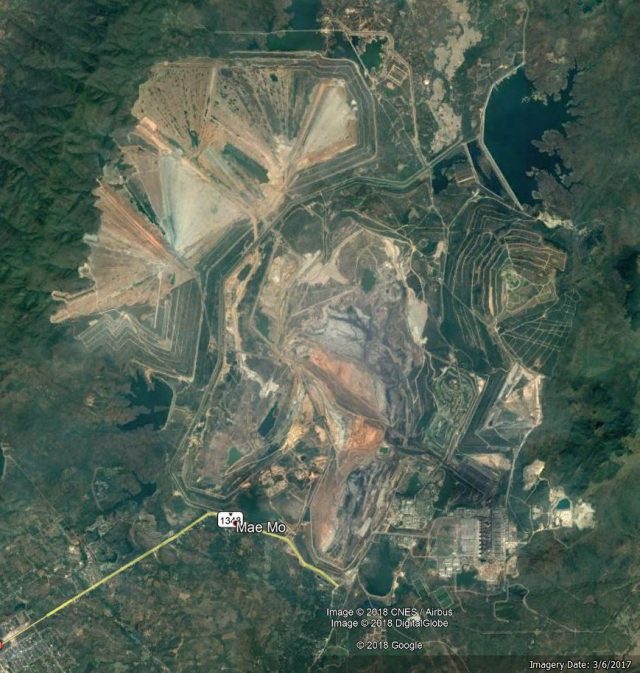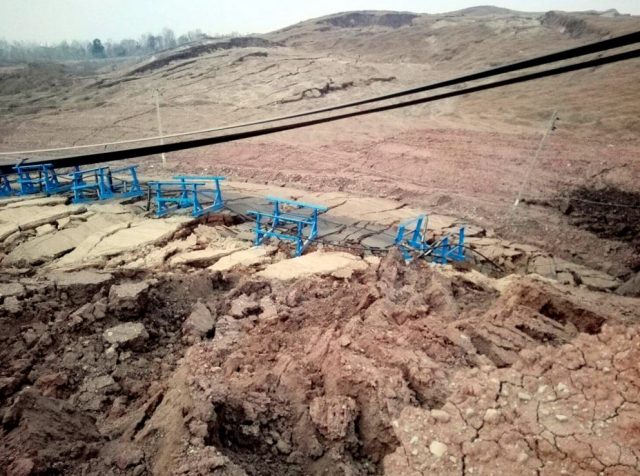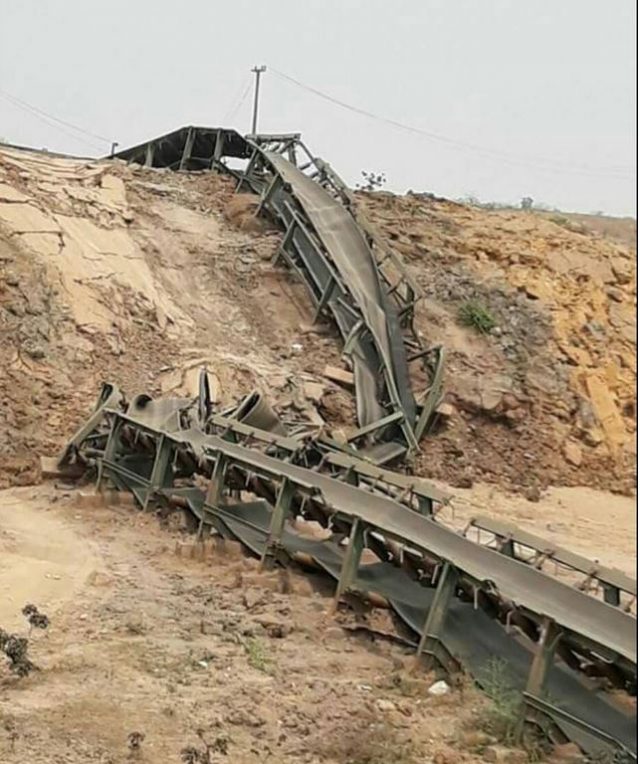20 March 2018
Mae Moh mine in Lampang province: a large, ongoing waste dump landslide
Posted by Dave Petley
Mae Moh mine in Lampang province: a large, ongoing waste dump landslide
The Thai Visa News website is reporting an extremely large, ongoing landslide at Mae Moh mine in Lampang province in Thailand. The Mae Moh mine is the reportedly the largest open cast lignite mine in Southeast Asia – the company website reports a total mining area of almost 4000 hectares and a waste dump area of about 4150 hectares. The website also makes great play of the operator’s careful environmental stewardship and social responsibility. This is a Google Earth image of the vast Mae Moh mine site, collected in 2017:-

Google Earth image of the Mae Moh Mine site, collected in 2017.
.
The landslide reportedly initiated on Saturday, although it is of course likely that this represents the point at which movement was observed rather than when it started. The images on the Thai Visa New website suggest that the volume that is in motion is large, with significant displacements having already accumulated:

Ongoing movement at the Mae Moh mine in Thailand, via Thai Visa News.
.

Deformation at the Mae Moh mine in Thailand, via Thai Visa News.
.
Such a large landslide (the Bangkok Post reports that it is over 1 km long) should not occur in a waste dump, and there is a need for action to manage the slope. The Nation reports that this is the latest in series of incidents associated with the Mae Moh mine:-
Maliwan Nakwirot, a resident living near the mine in Lampang, yesterday said a landslide in the area on Sunday was the result of misconduct by the mine operator, which had been piling excavated soil into unstable piles instead to storing it in abandoned mine pits. It is not the first time that there have been landslides at Mae Moh mine. There have already been three major landslides at the mine since last year, as these mountains of soil are not stable and are ready to slide anytime,” Maliwan said.
The Nation also reports that the Supreme Administrative Court ordered the evacuation of 2000 residents “as a safety precaution” in 2014, but that this has not yet happened.


 Dave Petley is the Vice-Chancellor of the University of Hull in the United Kingdom. His blog provides commentary and analysis of landslide events occurring worldwide, including the landslides themselves, latest research, and conferences and meetings.
Dave Petley is the Vice-Chancellor of the University of Hull in the United Kingdom. His blog provides commentary and analysis of landslide events occurring worldwide, including the landslides themselves, latest research, and conferences and meetings.
Take a look here: http://www.banmuang.co.th/news/region/105767
Picture 5th down shows a good idea of the scale